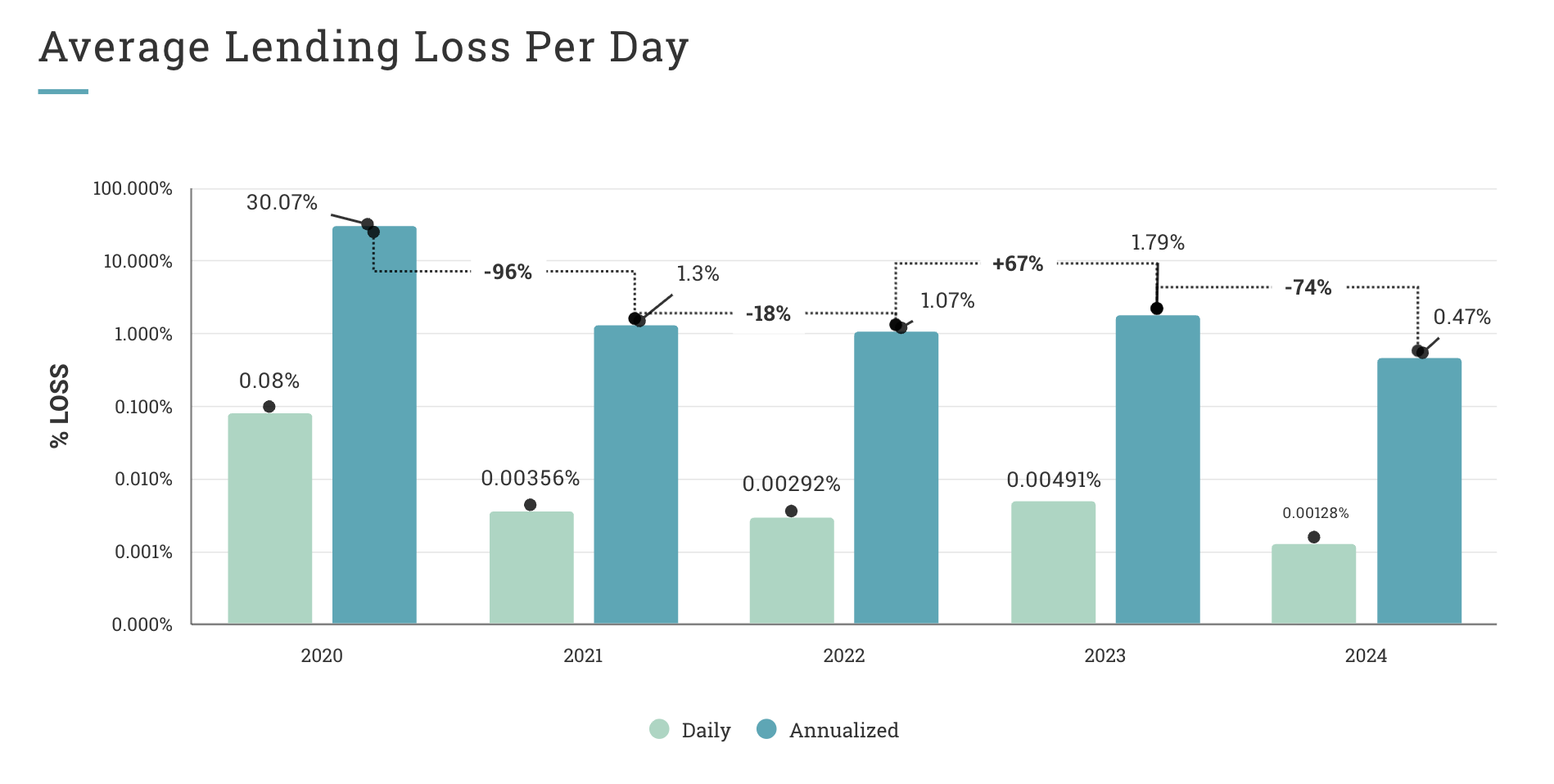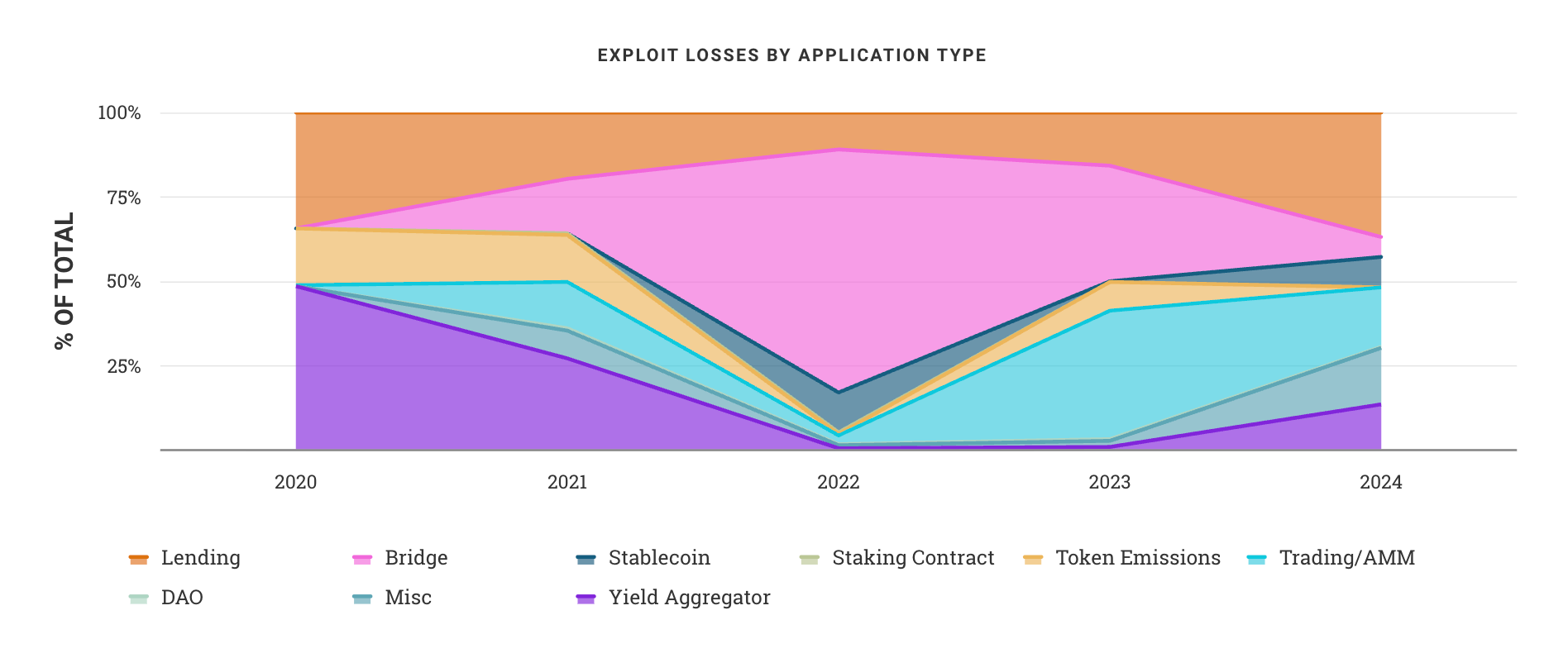The decentralized finance (DeFi) sector has undergone a remarkable security transformation, achieving a 90% reduction in exploit losses since 2020 and positioning itself as mature financial infrastructure capable of institutional adoption. Our analysis reveals that DeFi protocols have not only survived the “experimental era” but have systematically evolved into some of the most secure financial systems in existence, with daily loss rates plummeting to just 0.0014% by 2024.
This evolution represents more than statistical improvement; it demonstrates that decentralized financial systems can achieve and maintain institutional grade security when comprehensive risk frameworks are implemented. The journey from 30.07% annualized losses in 2020 to 0.47% in 2024 marks the transition from experimental protocols to mature financial infrastructure capable of serving institutional scale capital deployment.

Five distinct security phases have defined DeFi’s maturation: The “Experimental Era” of 2020 saw devastating 30.07% annualized losses due to unaudited smart contracts and fundamental vulnerabilities. The “First Security Revolution” of 2021 delivered an unprecedented 96% improvement through widespread adoption of professional auditing, bug bounty programs and formal verification. After a brief optimization plateau in 2022 and concerning backslide in 2023, the “Comprehensive Security Achievement” of 2024 established new standards with 74% loss reduction despite increased protocol complexity.
Attack patterns have fundamentally shifted, revealing both progress and evolving challenges. Yield aggregators, which dominated early DeFi hacks at 49% in 2020, have declined to just 14% by 2024 as protocols matured. Conversely, trading and automated market maker (AMM) platforms emerged as primary targets, growing from 0% to 18% of attacks as attackers focus on high-value, high-liquidity protocols. Most significantly, private key compromises have become the fastest-growing attack vector, jumping from 0% to 20% of incidents, highlighting that as technical security improves, attackers increasingly target operational security weaknesses.

The lending sector exemplifies this transformation most dramatically, achieving an extraordinary 98.4% improvement in security from 2020 baseline levels. DeFi lending protocols now maintain daily loss rates of just 0.00128%, making them 62.5 times more secure than during the experimental period. This improvement encompasses comprehensive protection against smart contract vulnerabilities, flash loan attacks, pricing manipulation, oracle failures and governance exploits.
Why this matters: The security achievements documented in this analysis fundamentally challenge prevailing narratives about DeFi risk and demonstrate that decentralized protocols can match or exceed traditional financial system security standards. The introduction of the Structural Risk Factor (SRF) framework provides a methodology for accurately assessing protocol risks in real-world asset (RWA) applications, enabling more informed capital allocation decisions. As institutional adoption accelerates and regulatory frameworks crystallize, these security improvements position DeFi as legitimate financial infrastructure rather than experimental technology, with profound implications for the future of stablecoins and global finance.
The data reveals that DeFi has successfully transitioned from high-risk experimental protocols to secure financial infrastructure, with comprehensive defense systems now addressing multiple attack vectors simultaneously rather than defending against individual threats in isolation. This transformation establishes the foundation for complex decentralized financial products and institutional-scale capital deployment, proving that community-driven security innovation can achieve results that rival centralized alternatives.
Discover more from Stay Updated Finance News
Subscribe to get the latest posts sent to your email.
